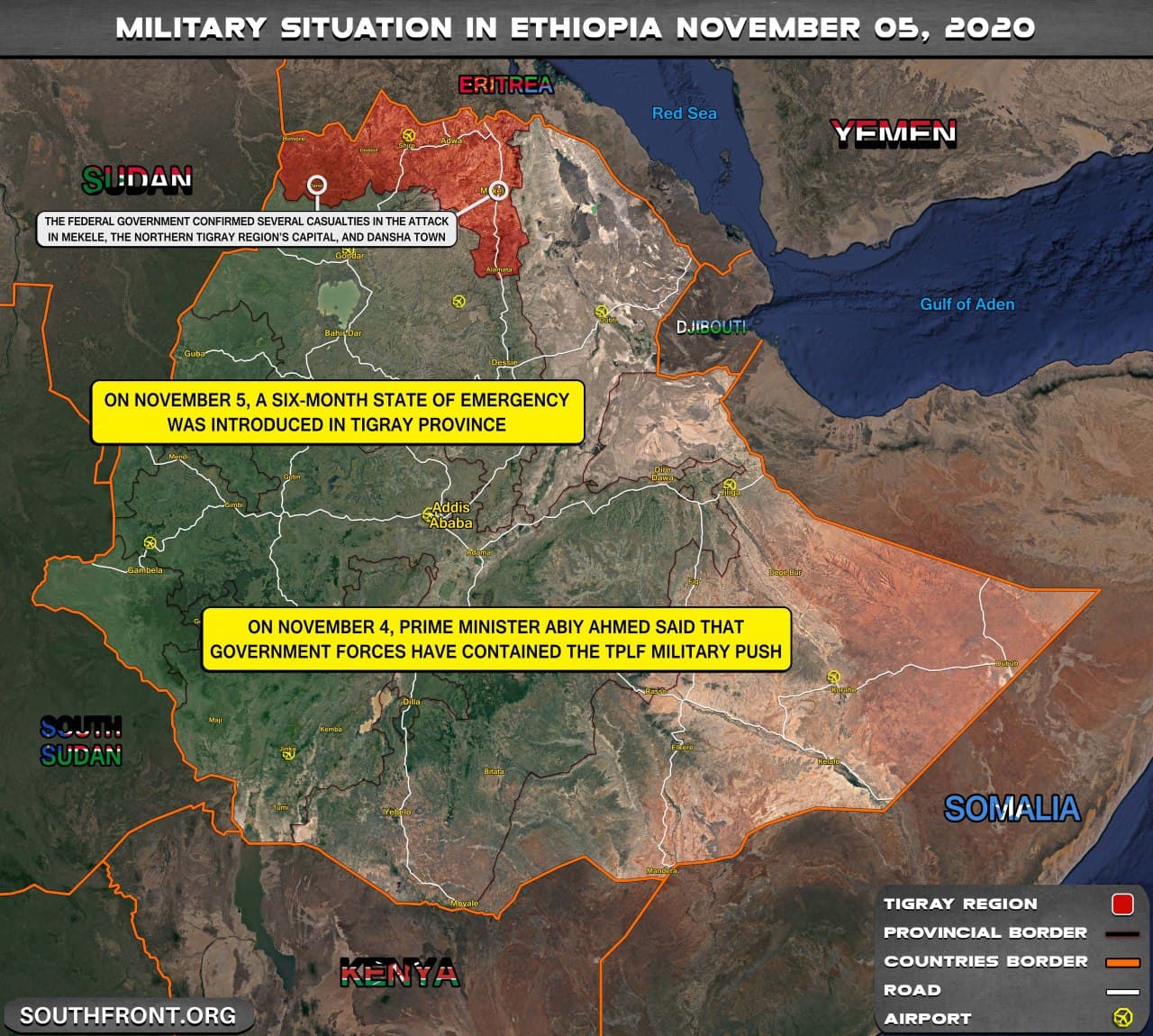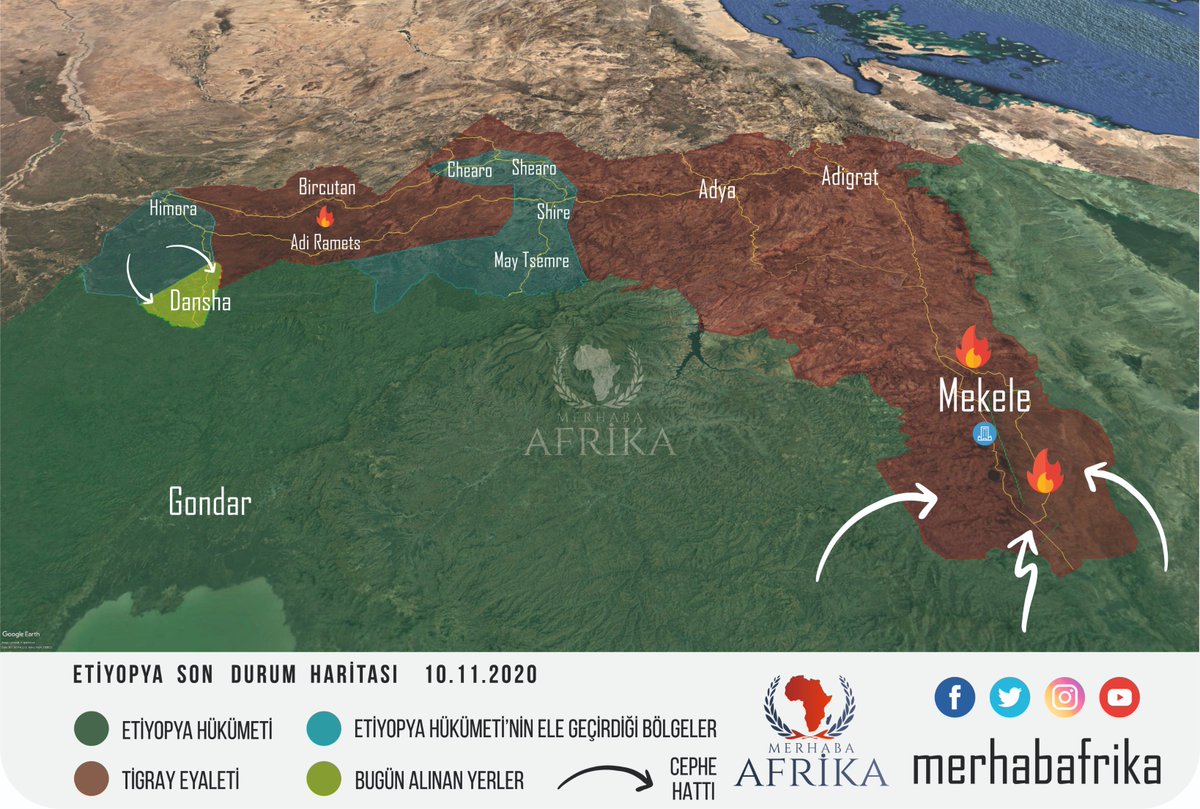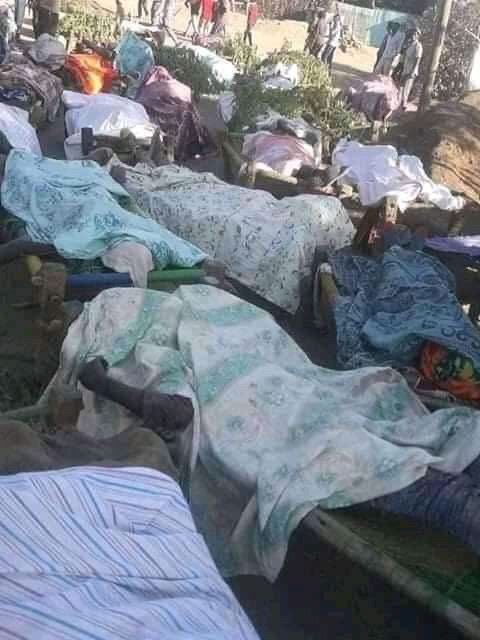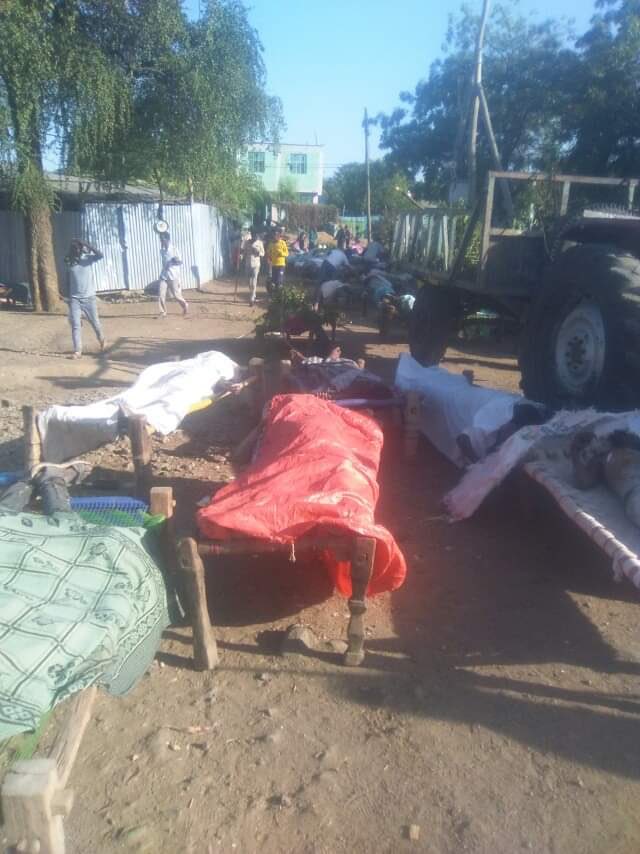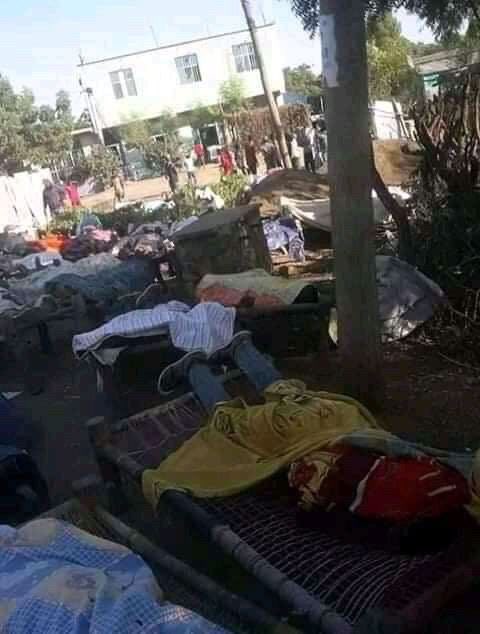In Ethiopia, the civil war between the Armed Forces, under the command of Prime Minister Abiy Ahmed and the Tigray People’s Liberation Front (TPLF) in the Tigray region.
As of November 12th, the Ethiopian Armed Forces appear to have the upper hand.
In the west of Tigray, the city of Chimora was captured, thanks to the advancement in the center of the province, Tigray was practically cut into 2 parts, in the east, with the support of artillery and aviation, the army was pushing the rebel defenses in the direction of Mekele.
The TPLF will try to hold the mountainous areas on the border, where the terrain will be favorable for defense, although on the other hand, no serious fortification work was carried out there, and the numerical and technical superiority of the Ethiopian army is quite obvious.
Despite claims that it has at least 200,000 trained officers that could join the fight, it currently seems like the TPLF won’t last until the end of the year.
The death toll is already in the hundreds. The Ethiopian government says that the fighting will continue until the power of the TPLF is eliminated.
The government, among other things, accused the TPLF of involvement in the murders of more than 1,000 civilians of one of the local Ahmar tribes.
The TPLF, in turn, accuses the government of murder, indiscriminate bombing and preparations for organizing a famine in Tigray.
In the north of the country, communications and electricity are still disconnected, there are problems with water supply. In general, the situation is quickly developing into another humanitarian disaster.
It should be noted that the central provinces of Ethiopia are also restless, where opponents of the current government are also seething.
In Tigray itself, the TPLF announced mobilization and called on the population to an armed struggle against “the criminal government.”
At the same time, a paper was sent to Addis Ababa with a proposal for an armistice so as not to “ruin the country” with another civil war.
In a more in-depth overview, the situation in Ethiopia is such:
There are surely more than two actors in the situation – it is not simply the Addis Ababa government against the Tigray region’s TPLF.
The TPLF presumably has a lot of resources for conventional warfare – helicopters, heavy field artillery, tanks, armored personnel carriers, etc. The resources of the federal government are presumably more limited. The Prime Minister does not have any special authority among the military – during the war with Eritrea, he served as a radio operator in intelligence and did not acquire sufficient connections in command structures, moreover, controlled by the TPLF.
This leads to the “outsourcing” of the war in favor of regional forces, ethno-regional militias and irredentists of the Amhara state – Mulualem Gemdin, adviser on security leadership of the state of Amhara, announced the dispatch of “thousands of militias” to the border. The concentration of forces in the Paradise zone, after 1991 annexed by Tigray and dissatisfied with the rule of the TPLF.
In the south (Guji) and west (Wollega) of Oromia State, there is another – low-intensity – guerrilla war, largely provoked by the Prime Minister’s break with the Oromo Democratic Party and the ensuing persecution of opposition Oromo politicians.
It erupted in late 2018, when many of the Oromo Liberation Army, the military wing of the legalized Oromo Liberation Front, who had laid down their arms and enrolled in the police, returned to forests and training bases and resumed attacks on military targets, army convoys and government infrastructure, and security forces responded with airstrikes on their bases.
The involvement of a militarized Eritrea with 200,000 troops and 120,000 reservists is the main intrigue of the coming days, Isaias Afeworki visited the Ethiopian Air Force base, presumably to discuss details of joint actions.
The head of the TPLF, Debrecyon Gebremikhael, announced the transfer of Eritrean troops across the border in the Humara region and in the Badme zone to fight the regional forces of Tigray, in addition, the TPLF reported that the military loyal to Addis Ababa had received refuge in Eritrea. The Eritrean Foreign Ministry denied the participation of Eritrean troops in the operation.
As such, there are quite a few pieces that are still to reveal their movements, which could potentially make the conflict more lengthy, but currently, despite all assumptions, it appears that the central government has the upper hand.
MORE ON THE TOPIC:



